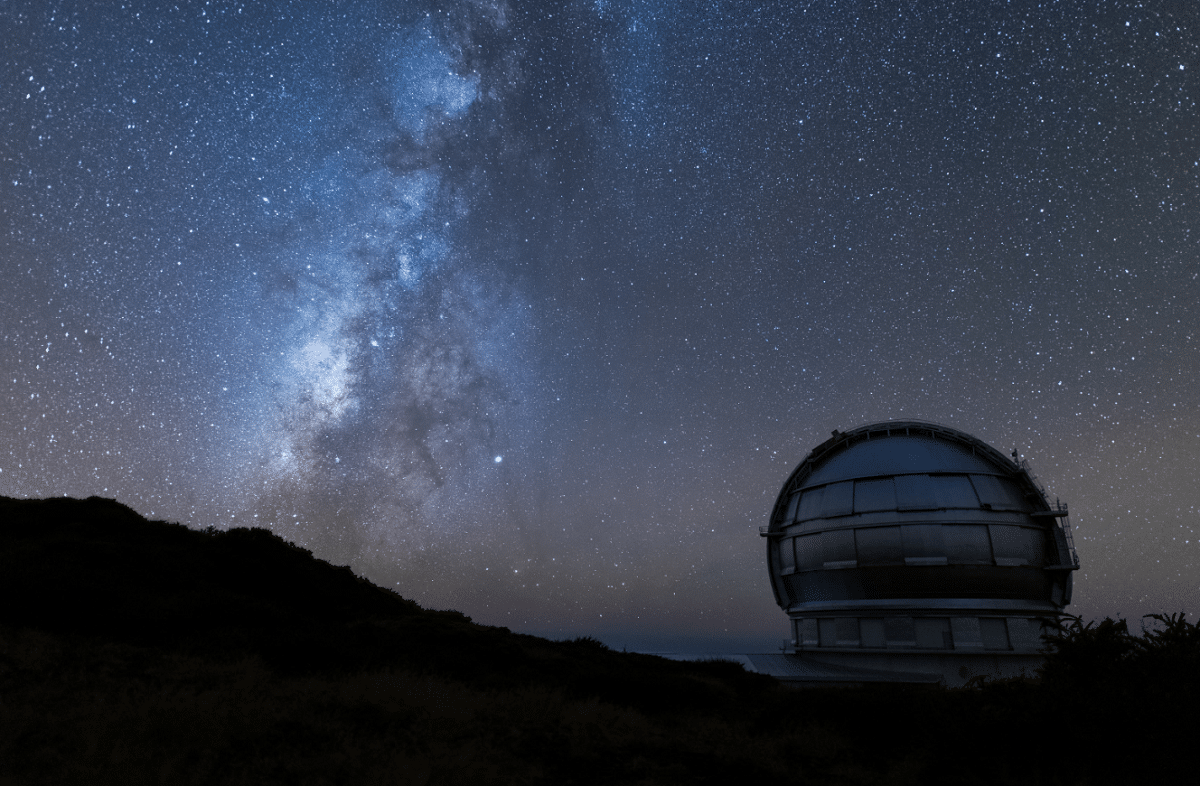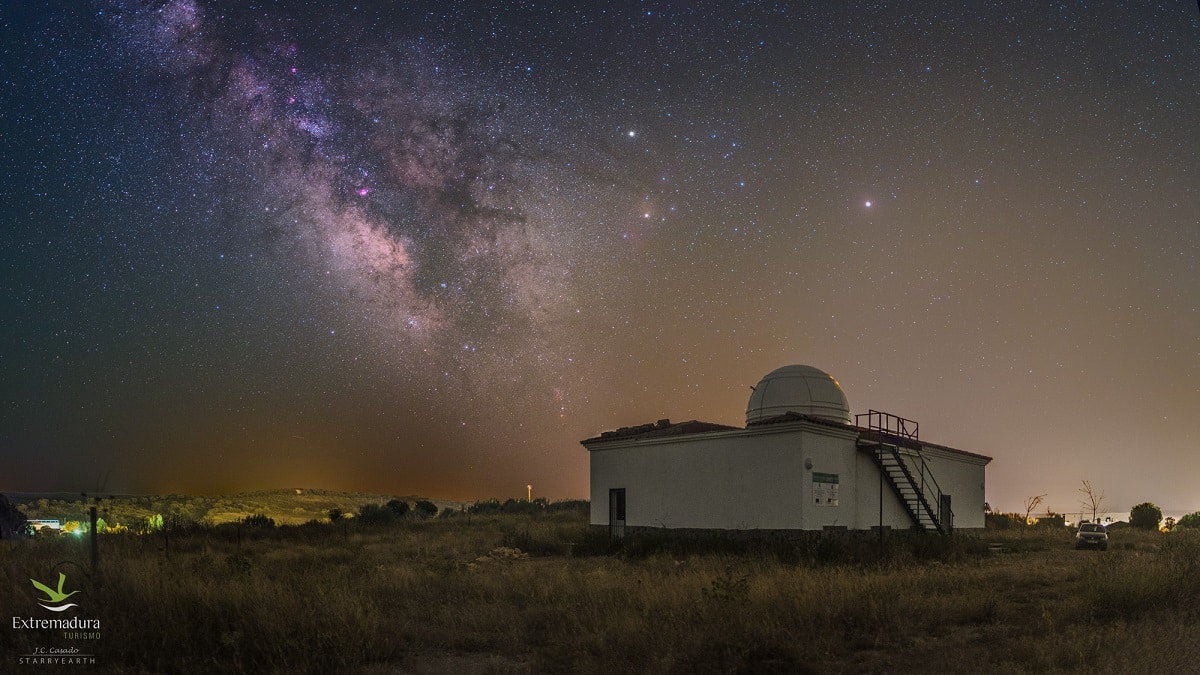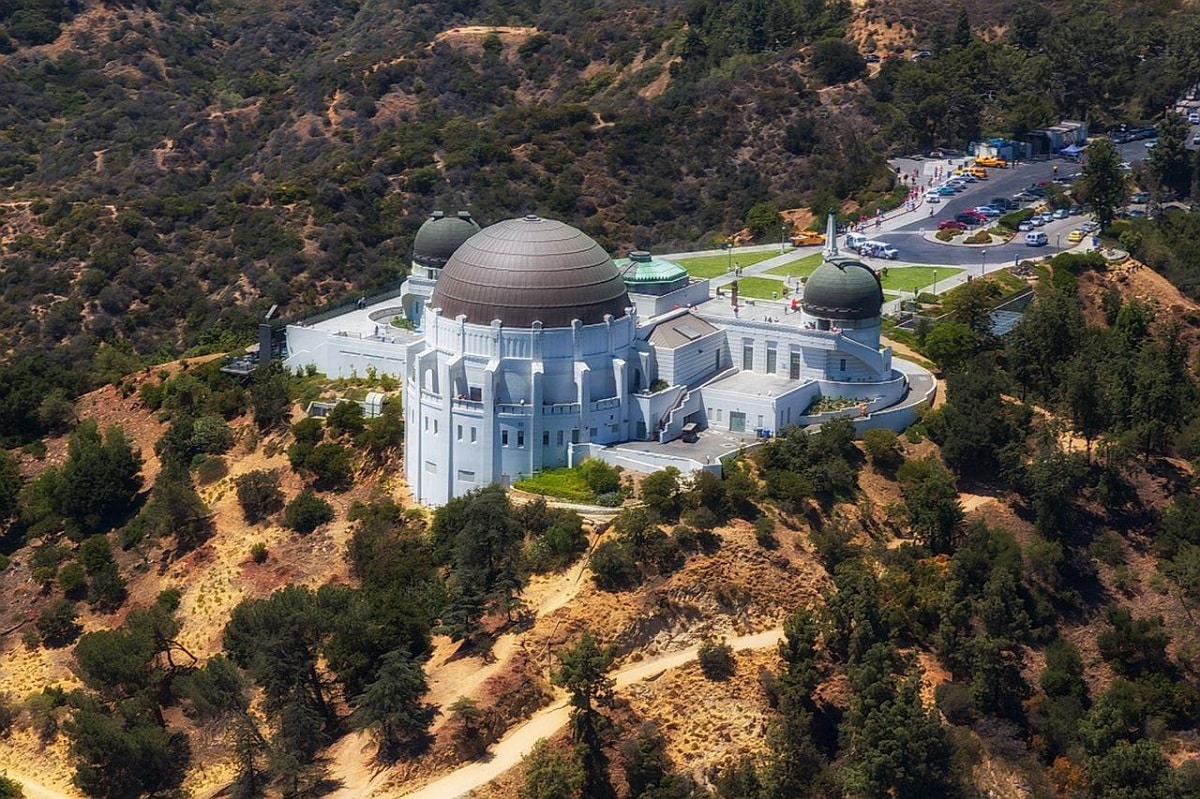
Astronomical observatories are used to observe the entire universe. It is necessary to have powerful machinery to be able to observe the stars, planets, asteroids, etc. The astronomical observatories in Spain They are located in places with zero light pollution to be able to do a good job.
In this article we are going to tell you which are the most important astronomical observatories in Spain and what their function is.
What is an astronomical observatory and its characteristics

An astronomical observatory is a place designed and equipped for the observation and study of celestial bodies, such as stars, planets, galaxies and other objects in the universe. These observatories can be ground-based or space-based and are equipped with advanced instruments and technologies to collect data and information about celestial objects.
Ground-based astronomical observatories are often located in remote locations, away from sources of light and air pollution, in order to obtain clear and accurate images of the night sky. Space observatories, on the other hand, are placed in orbit around the Earth, at a point that allows them to observe the universe without interference from the Earth's atmosphere.
Among the most important features of an astronomical observatory are its observing instruments, which may include telescopes, cameras, spectrometers, and other measuring devices. These instruments allow astronomers to observe and study different aspects of celestial objects, such as their chemical composition, their motion, and their brightness.
Another key feature of astronomical observatories is its ability to collect and analyze data through computing and communication technology. The data obtained from the observation instruments are recorded and analyzed using specialized software and shared with other astronomers and research centers around the world.
Astronomical observatories are also important centers of research and education, where astronomers can work together to make important research and discoveries about the universe. In addition, the observatories are also used by amateur astronomers and the general public to enjoy observing the night sky and learning about astronomy.
Astronomical observatories of Spain

Spain has a wide network of astronomical observatories both on land and in space. Some of the most outstanding observatories are mentioned below:
- Teide Observatory: Located on the island of Tenerife, it is one of the most important solar observatories in the world. It is home to several solar telescopes, including the European Solar Telescope (EST), which will be the world's largest solar telescope when it becomes operational in 2027.
- Calar Alto Observatory: Located in the Sierra de Los Filabres, in Almería, it is the most important terrestrial observatory in Spain. It has a wide range of telescopes, including the 3.5-meter telescope, the largest in Spain.
- Yebes Observatory: Located in the province of Guadalajara, it is the most important radio astronomy observatory in Spain. It has several radio telescopes, including the 40-meter radio telescope, which is the second largest in Europe.
- Sierra Nevada Observatory: Located in the Sierra Nevada National Park, in Granada, it is the highest observatory in Europe. It is mainly used for research in infrared and millimeter astronomy.
- Roque de los Muchachos Observatory: Located on the island of La Palma, in the Canary Islands, it is one of the best places in the world for astronomical observation due to its dark and stable sky. It has several telescopes of different sizes, including the Gran Telescopio Canarias, which is the largest optical telescope in the world.
In addition to these observatories, Spain also participates in international space missions, such as the Hubble Space Telescope mission and the European Space Agency (ESA), which is headquartered in Madrid and has several satellites in orbit for observing the universe.
Importance of astronomical observatories in Spain

The astronomical observatories in Spain have made important contributions to society and science in different areas of research. Some of the most notable contributions are the following:
- Discovery of extrasolar planets: The Roque de los Muchachos Observatory on La Palma has contributed to the discovery of several extrasolar planets through the transit method, including the first terrestrial-type planet discovered outside our solar system.
- Investigation of the structure and evolution of the universe: The Calar Alto Observatory has made a significant contribution to the study of the structure and evolution of the universe through the use of high-resolution telescopes.
- Study of solar physics: The Teide Observatory has contributed to the study of solar physics, particularly in the investigation of sunspots and their relationship with space weather.
- Observations of galaxies and objects of the distant universe: The Sierra Nevada Observatory has made important contributions in the observation of galaxies and objects in the distant universe through the use of infrared and millimeter telescopes.
- Research in radio astronomy: the Yebes Observatory has carried out research in radio astronomy, including the study of interstellar molecules and the observation of pulsars.
In addition to these important scientific contributions, Spain's astronomical observatories are also important research and educational centers for the scientific community and the general public. Through guided tours and educational programs, these observatories help spread knowledge about astronomy and encourage interest in science and technology.
star tourism
Star tourism, also known as astrotourism, is an activity that consists of observing the night sky in places far from the city lights. This activity has become more and more popular in recent years, as it allows people to enjoy the beauty of the night sky and learn about astronomy.
The astronomical observatories of Spain They are ideal destinations for star tourism due to the high quality of their night sky. and the presence of professional telescopes that allow a more detailed observation of the universe. Many of these observatories offer guided night tours and educational programs for the public, allowing visitors to learn more about astronomy and science.
In addition to the observatories, there are many other places in Spain that are ideal for stargazing, such as natural parks and places isolated from city light. Some of the most popular places for astrotourism in Spain include the Tablas de Daimiel National Park, the Monfragüe National Park and the Sierra de Gata region in Extremadura, among others.
Star tourism also has a positive impact on the local economy, as it attracts visitors and encourages the development of tourism infrastructure in rural areas. In addition, this activity promotes awareness of the importance of preserving dark skies and reducing light pollution, which benefits both astronomers and nocturnal fauna and flora.
I hope that with this information you can learn more about the astronomical observatories in Spain and their characteristics.